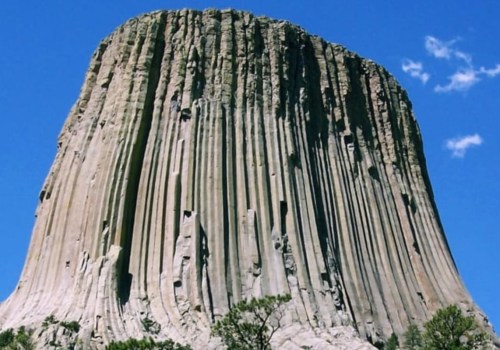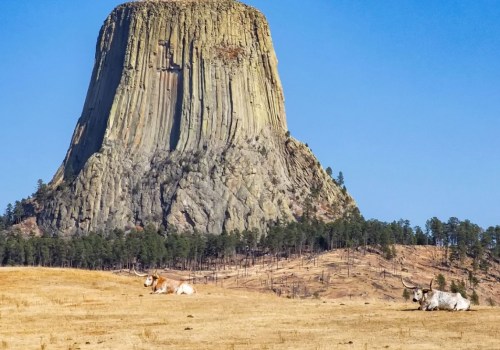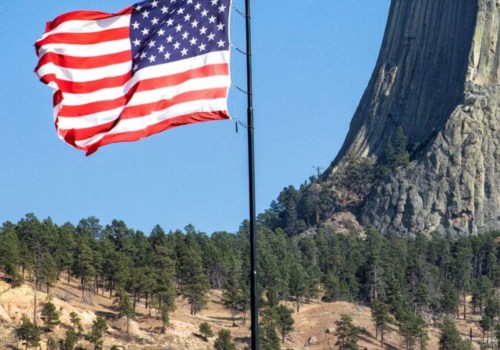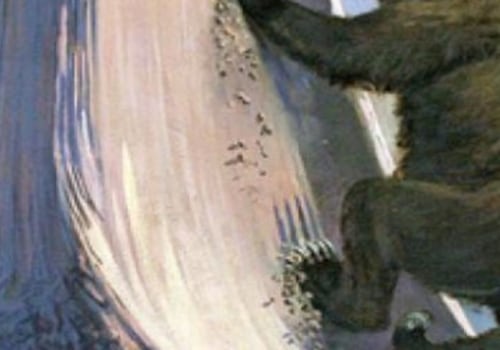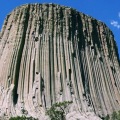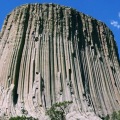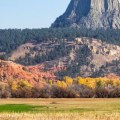The Devil's Tower in Wyoming is a remarkable geological formation that has puzzled geologists for centuries. It is an ancient volcanic plug, once covered by sediment, that has been exposed by erosion. The simplest explanation is that it is a reserve, a small intrusive body formed by magma that cooled underground and was later exposed. Other theories have suggested that it is a volcanic plug or the neck of an extinct volcano.
Some pyroclastic materials the same age as Devils Tower have been identified elsewhere in Wyoming, which could explain why the columns of Devils Tower are so large. As volcanic rocks slowly cooled, isolated by sediments, large columns could form. Only subsequent erosion exposed the unusual shape of Devils Tower. Geologists are still puzzled by the details that control the formation and pattern of columns in large bodies of volcanic rock. Cooling experiments were performed on small samples, only eight inches in length, so it is difficult to extrapolate these results to larger formations like Devils Tower.
In nature, joints can form only if the rock is brittle enough and grows over time from cooling from the outside to the still warm and soft inside inside the intrusion. The column joints develop approximately at right angles to the cooling surfaces, which are generally the tops or bottoms of lava flows, the walls of a magma chamber, or a volcanic conduit. In the case of the Devil's Tower, the columns are tilted toward the base, which suggests that the cooling surface, the walls of the volcanic plug, were tilted outwards. But why the columns become almost vertical in the reconstructed core of the Devil's Tower Intrusion is a bit of a mystery. Geologists assume that tectonic forces and chemical composition of volcanic rocks influence the distribution of heat within the intrusion. As the joints follow isotherms (lines connecting points of the same temperature), perhaps the modern geometry of Devils Tower reflects mechanisms of magma placement in Earth's upper crust.
The columns thinning upward from the lower colonnade in Devils Tower suggest that cooling rate associated with formation of these columns increased during solidification of entire magmatic body. Corry's (198) hypothesis that Devils Tower could represent a neck formed by magma that invaded extended roof of a laccolito can be ruled out because surrounding strata are not sinking far from this structure as would be expected in this scenario. O'Harra (from South Dakota School of Mines) theorized that Devils Tower should be an eroded remnant of a laccolito. We propose new siting scenario that relies on conceptual analog model using plaster of Paris as analog of magma which shows internal flow pattern of magnetic fabrics of dispersed magnetic particles and serves as template for numerical cooling model that pairs with Devils Bonding Pattern columnar tower. Department of State allowed sampling sedimentary rocks in area around Devils Tower National Monument and collection only one specimen phonolite in talus in blocks at base of tower. Geologists Carpenter and Russell studied Devils Tower in late 19th century and concluded that it consisted igneous intrusion. Walls of Devils Tower consist two levels columns such as those typically developed in basaltic lava flows (DeGraff and Aydin, 198) which melt ~70 m below upper plateau (Fig.
Devils Tower was first declared national monument United States established on September 24, 1906 by President Theodore Roosevelt. Therefore, such scenario curved columns northwest wall Devil's Tower would be formed by cooling from surface raised mound while straight columns southeastern walls would be formed by cooling from flat and slightly inclined bottom extrusive lobe positioned along walls Maar Crater. Phonolite sample collected from collapsed columnar block in Devils Tower was also evaluated for variations AMS and bulk magnetic susceptibility in temperature range 190 to 720 °C. Therefore it is logical to assume both Missouri Buttes and Devils Tower could be interpreted as magmas located at shallow levels two individual maar-diatreme volcanoes. Schematic block diagrams explaining geological origin Devil's Tower and sketches typical microstructures and mesoscale outcrops Maar-Diatremes volcanoes. Combined analog modeling methods that simulate intrusion magma into Maar-Diatremes and thermal mathematical modeling cooling magmatic bodies revealed that Devil's Tower can be explained as remnant low lava dome or coulée located maar Maar-Diatreme volcano.
